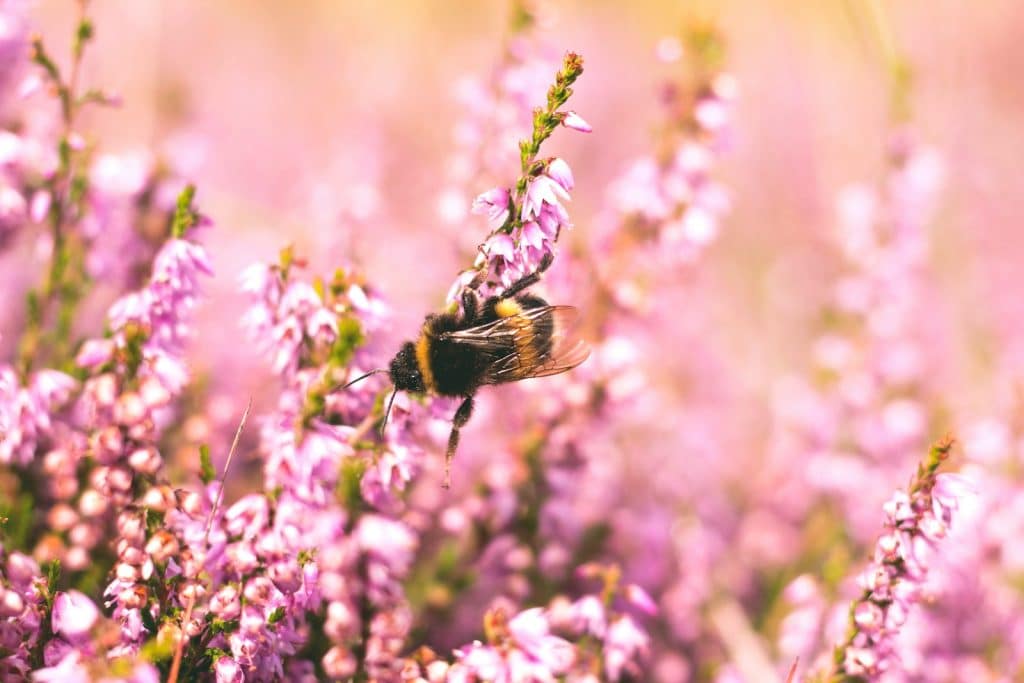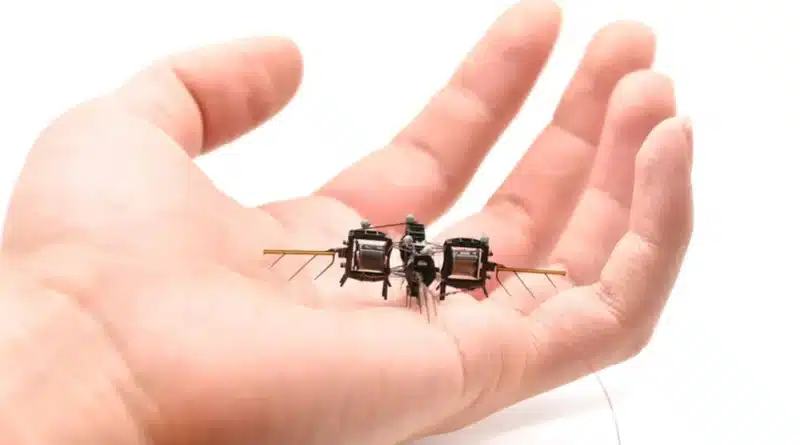Bees are crucial for our ecosystem because they pollinate many plants, fruits, and vegetables we rely on for food. Sadly, their population continuously decreases each year due to challenges like pesticide use and habitat loss.
Without bees, we could face serious environmental and food problems.
But here’s some good news!
Researchers at MIT have created robot bees that can pollinate just like real bees. These robotic insects could eventually come from mechanical hives and pollinate crops quickly and accurately.

This project is partially funded by the U.S. National Science Foundation and a Mathworks Fellowship.
So, why are robot bees important?
These robotic bees could efficiently pollinate crops, helping farmers grow fruits and vegetables in stacked warehouses.

The MIT team first created robotic bees, but their earlier models weren’t as fast or durable as real bees. To make improvements, the researchers redesigned the tiny robots.
The first models had four identical parts with two wings each and looked like small rectangular devices.
The new design weighs less than a paperclip but can fly much faster than earlier versions.
The researchers also split the robot in half, giving each part one wing that stabilizes the flight and improves lift. This change makes flying more stable and allows for more space to carry tiny batteries or sensors.

They also added long hinges to the wings, about 2 cm long and 200 microns wide. These were made using precise laser cutting to reduce wear and increase flight time.
The wings are also powered by artificial muscles made from layers of elastomers and rolled carbon nanotube electrodes. These parts help the wings flap quickly.
Earlier designs also struggled with bending or collapsing, which reduced performance. The new version includes systems that prevent this buckling, allowing for stronger movement.

Thanks to these updates, the new robotic bees can hover for over 1,000 seconds—around 17 minutes—while maintaining good flight quality. That’s 100 times longer than before! They’re also faster and can perform acrobatic maneuvers like double aerial flips.
The latest version can also reach speeds of about 35 centimeters per second, which is the fastest speed recorded for these kinds of robots. It can even fly in the pattern of “M-I-T.”
The researchers at MIT aim to have the robots fly for over 10,000 seconds. They also want to make them precise enough to land and take off from the center of a flower. The researchers also want to add tiny batteries and sensors so these robots can operate outside the lab.



